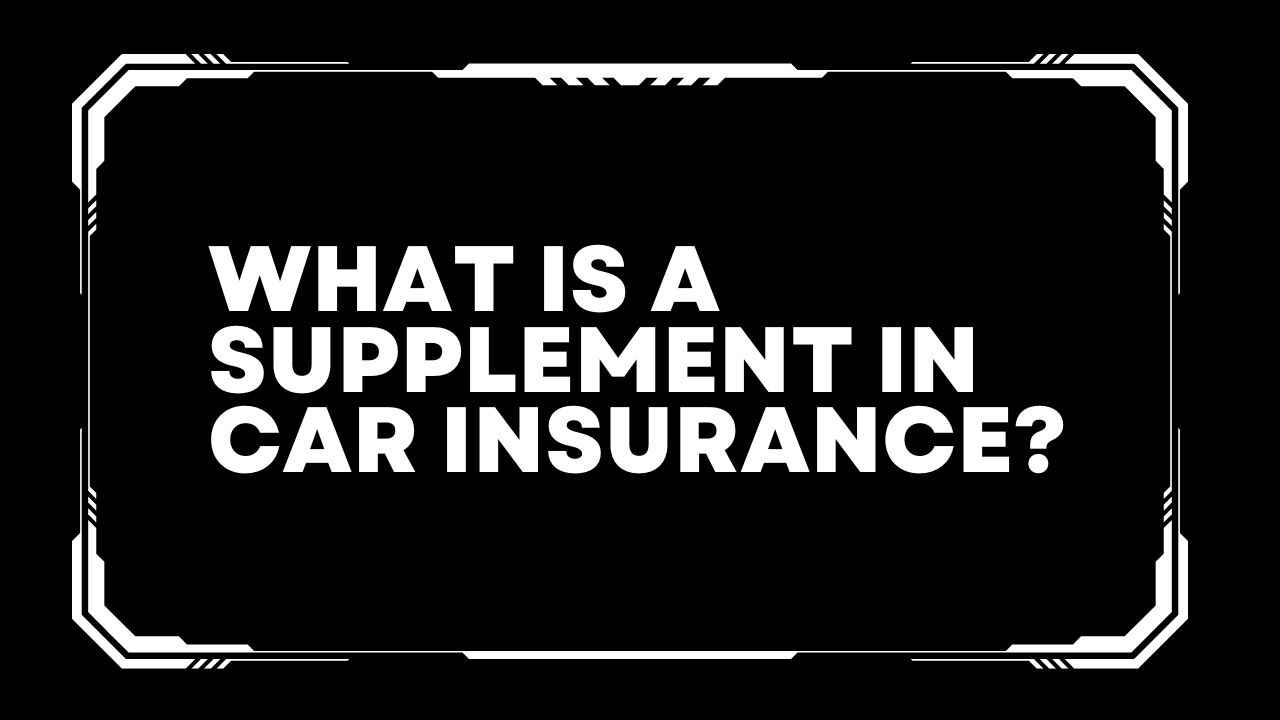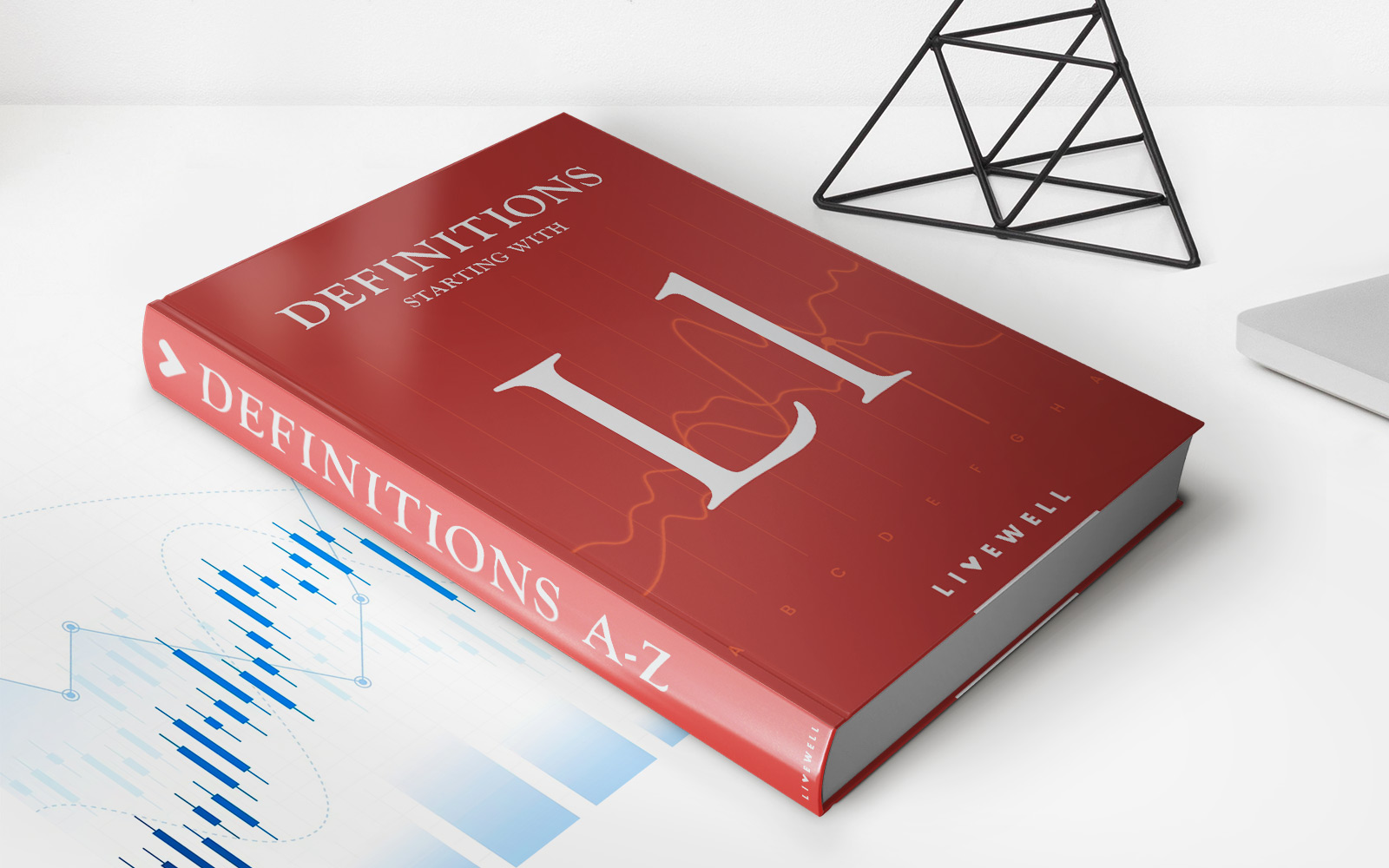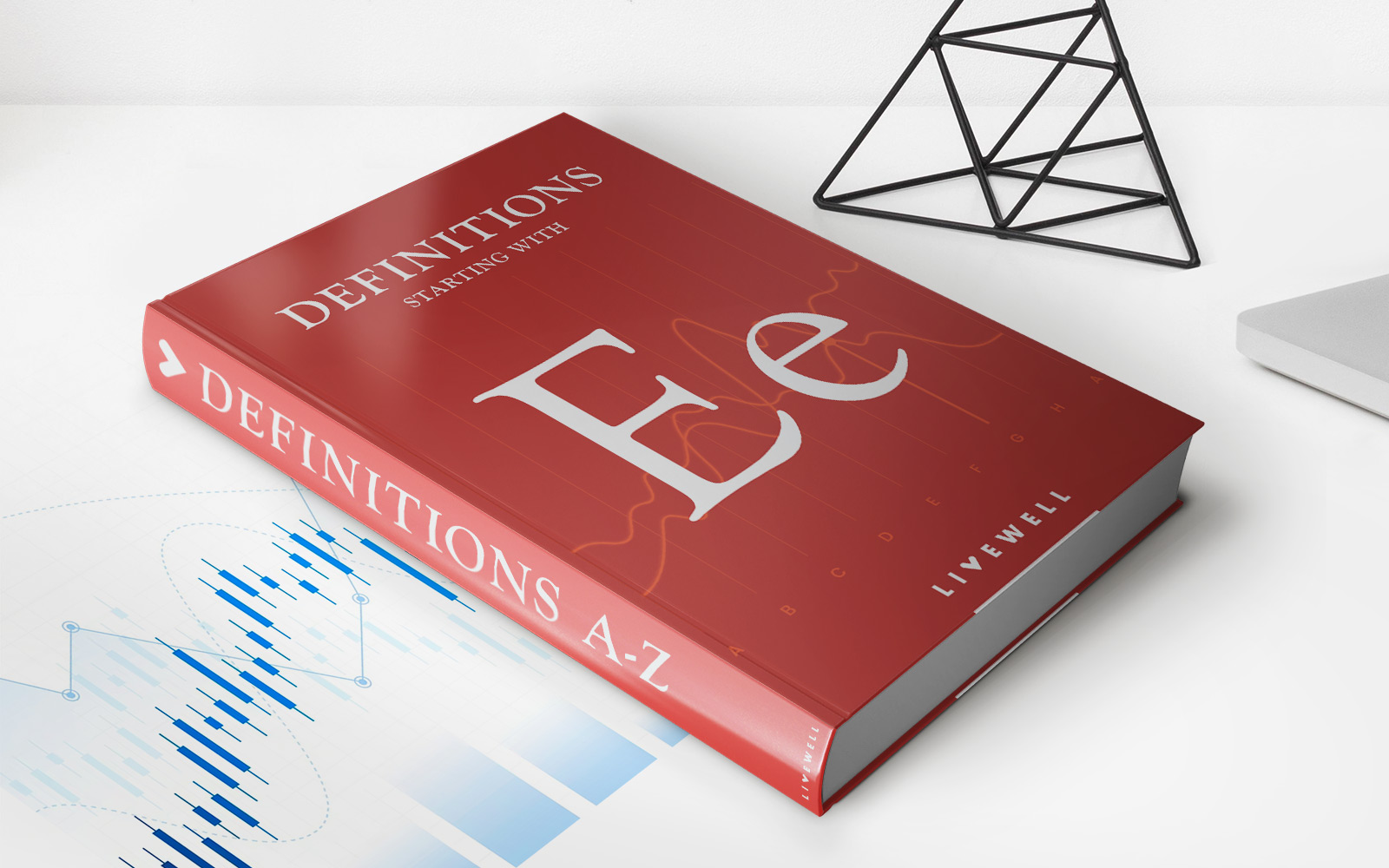

Finance
What Is An Auto Insurance Binder?
Modified: December 30, 2023
Learn what an auto insurance binder is and how it can provide temporary coverage for your vehicle. Find out how it can help secure your finances
(Many of the links in this article redirect to a specific reviewed product. Your purchase of these products through affiliate links helps to generate commission for LiveWell, at no extra cost. Learn more)
Table of Contents
What Is an Auto Insurance Binder?
An auto insurance binder is a temporary agreement between an insurance company and a policyholder that provides temporary coverage until the formal insurance policy is issued. It serves as proof of insurance coverage during the underwriting process and ensures that the policyholder is protected while waiting for the final policy documents. The purpose of an auto insurance binder is to provide immediate coverage and peace of mind for the policyholder.
When a policyholder purchases a new car or switches insurance companies, there is often a gap between the time the insurance application is submitted and the policy is officially issued. During this period, the policyholder is vulnerable to potential risks without insurance coverage. An auto insurance binder bridges this gap by providing temporary coverage until the insurance company completes the underwriting process and issues the official policy.
The auto insurance binder is typically issued by the insurance agent or broker and is valid for a specific time period, usually about 30 days. It outlines the details of the coverage such as the name of the insured, the type of coverage, the vehicle(s) covered, the premium amount, and the effective dates of the binder. It is important for policyholders to review the binder carefully to ensure that it accurately reflects the desired coverage.
It’s important to note that an auto insurance binder is not a substitute for a formal insurance policy. While the binder provides temporary coverage, it is essential for the policyholder to receive and review the actual insurance policy once it is issued. The policy will contain all the terms, conditions, and exclusions that govern the coverage.
An auto insurance binder can be requested by the policyholder, especially when there is an immediate need for proof of insurance, such as registering a new vehicle or satisfying a lender requirement. Additionally, insurance companies may issue a binder automatically when a policy is pending approval, ensuring that the policyholder is protected while the company completes the necessary paperwork.
Overall, an auto insurance binder is a crucial document that provides immediate coverage and peace of mind to policyholders during the underwriting process. It serves as temporary proof of insurance until the formal policy is issued and should be reviewed carefully to ensure accuracy and to understand the coverage provided.
By having an auto insurance binder, policyholders can have confidence in their coverage while they await the full policy documentation from their insurance provider.
Definition of an Auto Insurance Binder
An auto insurance binder is a temporary agreement between an insurance company and a policyholder that provides temporary coverage until the formal insurance policy is issued. It serves as proof of insurance coverage during the underwriting process and ensures that the policyholder is protected while waiting for the final policy documents.
When a policyholder purchases a new car or switches insurance companies, there is often a gap between the time the insurance application is submitted and the policy is officially issued. This gap can leave the policyholder vulnerable to potential risks without insurance coverage. An auto insurance binder bridges this gap by providing temporary coverage until the insurance company completes the underwriting process and issues the official policy.
The auto insurance binder is typically issued by the insurance agent or broker and is valid for a specific time period, usually about 30 days. It outlines the details of the coverage such as the name of the insured, the type of coverage, the vehicle(s) covered, the premium amount, and the effective dates of the binder.
Policyholders often need an auto insurance binder for various reasons. For instance, when purchasing a new car, they may need proof of insurance to register the vehicle or comply with lender requirements. In such cases, having an auto insurance binder can provide immediate coverage while waiting for the formal policy documents to be issued.
While the auto insurance binder provides temporary coverage, it is essential for the policyholder to receive and review the actual insurance policy once it is issued. The policy contains all the terms, conditions, and exclusions that govern the coverage, and supersedes the binder. It is crucial for the policyholder to carefully review the policy and ensure it reflects the desired coverage.
In summary, an auto insurance binder is a temporary agreement that provides immediate coverage to the policyholder while the formal insurance policy is being processed. It serves as proof of insurance and protects the policyholder from potential risks during the underwriting period. Policyholders should review the binder carefully and ensure they receive the full policy once it is issued to understand the complete terms and conditions of their coverage.
How Does an Auto Insurance Binder Work?
When a policyholder purchases a new car or switches insurance providers, there is a period of time between when the insurance application is submitted and when the policy is formally issued. This gap can leave the policyholder without insurance coverage, which can be risky. That’s where an auto insurance binder comes into play.
An auto insurance binder works by providing temporary coverage to the policyholder during this gap period. It serves as proof of insurance and ensures that the policyholder is protected until the formal insurance policy is issued.
The process of obtaining an auto insurance binder usually begins when the policyholder contacts an insurance agent or broker to request coverage. The agent assesses the individual’s needs and gathers information regarding the car to be insured. This includes details such as the car’s make, model, year, and identification number.
Once the necessary information is collected, the insurance agent or broker prepares the auto insurance binder. The binder includes important details such as the policyholder’s name, the type of coverage, the vehicles covered, the premium amount, and the effective dates of the binder. It is crucial for the policyholder to review the binder carefully to ensure that it accurately reflects the desired coverage.
Typically, an auto insurance binder is valid for a specific period, often around 30 days. During this time, the policyholder is fully covered as outlined in the binder. This means that in the event of an accident or other covered incident, the insurance company will provide the benefits and coverage stated in the binder.
Once the formal insurance policy is issued, it replaces the auto insurance binder. The policy contains all the terms, conditions, and exclusions that govern the coverage. It is important for the policyholder to carefully review the policy and make sure it reflects the agreed-upon terms. Any discrepancies between the policy and the binder should be addressed with the insurance company or agent.
If, for any reason, the policy is not issued or there are delays in the process, the policyholder may need to request an extension of the auto insurance binder or seek alternative coverage options to avoid a coverage gap.
In summary, an auto insurance binder works by providing temporary coverage to policyholders during the gap period between submitting an insurance application and receiving the formal policy. It acts as proof of insurance and ensures that the policyholder is protected while waiting for the policy to be issued. Policyholders should carefully review the binder and obtain the full policy once it is issued to ensure they have the appropriate coverage.
Purpose of an Auto Insurance Binder
The purpose of an auto insurance binder is to provide temporary coverage and peace of mind to policyholders during the underwriting process. It serves as proof of insurance and protects the policyholder from potential risks during the gap period between submitting an insurance application and receiving the formal policy.
One of the primary purposes of an auto insurance binder is to ensure that the policyholder has immediate coverage when purchasing a new car or switching insurance companies. Without an auto insurance binder, there could be a period of time where the policyholder is without insurance coverage, leaving them vulnerable to potential costs and liabilities.
An auto insurance binder also serves as proof of insurance during the underwriting process. The binder provides documentation that the policyholder has taken the necessary steps to obtain insurance coverage and can be presented as evidence when required, such as when registering a new vehicle or satisfying lender requirements.
Moreover, an auto insurance binder offers peace of mind to the policyholder. By providing temporary coverage, it assures the policyholder that they are protected while waiting for the formal policy to be issued. This is especially important in situations where immediate coverage is required, such as when driving a new car off the lot or during the policy changeover process.
Additionally, an auto insurance binder provides financial protection for the policyholder in case of an accident or other covered incidents that may occur during the underwriting period. The binder outlines the specific terms and conditions of coverage, ensuring that the policyholder has the necessary protection in place for unforeseen events.
Insurance companies also benefit from issuing auto insurance binders. By providing temporary coverage, they can establish a relationship with the policyholder and demonstrate their commitment to fulfilling insurance obligations. It also allows the insurance company to collect premium payments during the underwriting process, providing immediate revenue.
Overall, the purpose of an auto insurance binder is to provide temporary coverage, proof of insurance, and peace of mind to policyholders during the underwriting process. It ensures that policyholders are protected from potential risks and liabilities while waiting for the formal policy to be issued, allowing them to drive with confidence and meet any necessary requirements.
Benefits of Having an Auto Insurance Binder
Having an auto insurance binder offers several benefits to policyholders. It provides temporary coverage, proof of insurance, peace of mind, and financial protection during the underwriting process. Let’s explore these benefits in more detail:
- Immediate Coverage: One of the key benefits of an auto insurance binder is that it provides immediate coverage to the policyholder. Whether purchasing a new car or switching insurance companies, the binder ensures that the policyholder is protected during the gap period while waiting for the formal policy to be issued. This coverage is crucial in safeguarding the policyholder’s financial and legal obligations.
- Proof of Insurance: An auto insurance binder serves as proof of insurance coverage during the underwriting process. It provides documentation that the policyholder has taken the necessary steps to secure insurance and can be presented as evidence when required, such as during vehicle registration or to meet lender requirements. This proof is essential to fulfilling legal obligations and ensures a smooth process in various situations.
- Peace of Mind: By having an auto insurance binder, policyholders can have peace of mind knowing that they are protected during the waiting period for the formal policy. This is especially important in situations where immediate coverage is necessary, such as when driving off the lot with a new car or transitioning to a new insurance provider. The binder offers reassurance that any potential risks or liabilities are covered until the formal policy is issued.
- Financial Protection: An auto insurance binder provides financial protection to policyholders in case of accidents or covered incidents during the underwriting process. It outlines the specific terms and conditions of coverage, ensuring that the policyholder has the necessary protection in place for unforeseen events. This protection can save policyholders from significant financial burdens and liabilities that may arise during the waiting period.
- Temporary Coverage for Specific Needs: An auto insurance binder can be particularly beneficial in specific situations that require immediate coverage. For example, if a policyholder needs proof of insurance to register a new vehicle or satisfy lender requirements, the binder can provide the necessary coverage until the formal policy is issued. This temporary coverage allows policyholders to meet specific needs and obligations without any delays or complications.
Overall, having an auto insurance binder offers policyholders temporary coverage, proof of insurance, peace of mind, and financial protection during the underwriting process. It ensures that policyholders are immediately covered, have necessary documentation, and can drive with confidence while waiting for the formal policy to be issued.
Important Considerations for Auto Insurance Binders
While auto insurance binders provide temporary coverage and proof of insurance during the underwriting process, it is important for policyholders to consider a few key factors. These considerations can help ensure that the auto insurance binder meets their specific needs and avoids any potential issues. Here are the important considerations to keep in mind:
- Effective Dates: Pay close attention to the effective dates of the auto insurance binder. It is crucial to know when the coverage begins and ends to avoid any gaps in insurance protection. Make sure the effective dates align with your specific needs, such as when you plan to start using the vehicle or when your current policy ends.
- Accurate Information: Verify that all the information in the auto insurance binder is correct. Check details such as your name, address, vehicle information, and coverage types to ensure there are no errors that could impact your coverage. Notify your insurance agent or broker immediately if you spot any inaccuracies.
- Policy Limits and Deductibles: Review the policy limits and deductibles outlined in the binder. Ensure that they meet your coverage requirements and fit within your budget. Consider factors such as the value of your vehicle, potential risks, and your financial situation when making decisions about the policy limits and deductibles.
- Exclusions and Limitations: Familiarize yourself with the exclusions and limitations specified in the auto insurance binder. These outline the circumstances or situations in which coverage may not apply. Understanding these exclusions is crucial to avoid potential surprises or misunderstandings when making a claim or facing an incident not covered by the policy.
- Claims Process: Understand the process for filing a claim and receiving benefits outlined in the binder. Take note of the contact information and procedures for reporting accidents or incidents covered by the policy. Knowing these details beforehand will allow you to act promptly and effectively when necessary.
- Transition to Formal Policy: Remember that the auto insurance binder is temporary and will eventually be replaced by the formal policy. Be prepared to review and understand the terms and conditions of the policy once it is issued. Any discrepancies or questions should be addressed promptly with your insurance agent or company to ensure a smooth transition.
- Extension or Alternative Coverage: If there are any delays in receiving the formal policy or if you require coverage beyond the expiration of the binder, consider requesting an extension or exploring alternative coverage options. It is essential to avoid any gaps in insurance coverage to remain protected at all times.
By carefully considering these factors, policyholders can ensure that the auto insurance binder meets their needs and provides the necessary coverage during the underwriting process. Remember to stay informed, communicate any concerns or questions to your insurance provider, and be proactive in managing your insurance coverage.
Examples of Auto Insurance Binders
Auto insurance binders come in various forms and may differ between insurance companies and policyholders. Here are a few examples of auto insurance binders:
- New Car Purchase: Let’s say you purchased a brand-new car and reached out to an insurance agent to request coverage. The agent would provide you with an auto insurance binder specifying your name, the vehicle’s details, coverage types (such as liability, collision, and comprehensive), premium amount, and effective dates. This binder would serve as proof of insurance until the formal policy is issued.
- Policy Switch: Imagine you decide to switch insurance providers for better coverage or more competitive rates. During the transition, your new insurance company may issue an auto insurance binder to provide you with immediate coverage. The binder would outline your policy details, premiums, and effective dates, bridging the gap between your old and new policies.
- Registration Requirement: In some cases, you may need an auto insurance binder to satisfy registration requirements for a new vehicle. When purchasing a car and visiting the Department of Motor Vehicles (DMV) to register it, they may require proof of insurance. Your insurance agent can provide you with an auto insurance binder to fulfill this requirement while you await the formal policy documents.
- Loan Requirements: If you are financing a vehicle, the lender may require proof of insurance before finalizing the loan. In this situation, you can request an auto insurance binder from your insurance agent to demonstrate that you have coverage in place. This binder will serve as temporary proof of insurance until the formal policy is issued.
- Pending Policy Approval: In some cases, an insurance company may issue an auto insurance binder automatically when a policy application is pending approval. This ensures that you have coverage and protection while the insurance company completes the necessary underwriting process. The binder will outline the specific coverage details and remain effective until the official policy is issued.
These are just a few examples of auto insurance binders, and the specific details may vary depending on the insurance company and individual policyholder’s circumstances. It’s important to review the binder carefully and ensure that it accurately reflects the desired coverage and meets any legal or contractual obligations.
Remember, while the auto insurance binder provides temporary coverage, it is essential to obtain and review the formal policy once it is issued. The policy contains the complete terms, conditions, and exclusions that govern the coverage and replaces the binder as the official document.
Conclusion
An auto insurance binder serves as a temporary agreement between an insurance company and a policyholder, providing immediate coverage and proof of insurance during the underwriting process. While it is not a substitute for a formal insurance policy, the binder offers several benefits and considerations for policyholders.
Having an auto insurance binder provides policyholders with immediate coverage, ensuring they are protected from potential risks during the gap period between submitting an insurance application and receiving the formal policy. It serves as proof of insurance, satisfying requirements for vehicle registration or lender demands.
Policyholders should consider important factors when obtaining an auto insurance binder, including reviewing effective dates, verifying accurate information, understanding policy limits and deductibles, and familiarizing themselves with exclusions and claim processes. It is crucial to transition smoothly to the formal policy once it is issued and to address any discrepancies or delays promptly.
Examples of auto insurance binders include those for new car purchases, policy switches, meeting registration requirements, satisfying loan obligations, and during pending policy approval. These examples illustrate the versatility of auto insurance binders in various scenarios.
In conclusion, an auto insurance binder serves as a temporary solution to provide coverage and proof of insurance during the underwriting process. It offers immediate protection, peace of mind, and ensures policyholders meet legal obligations. By understanding the purpose, benefits, considerations, and examples of auto insurance binders, policyholders can navigate the insurance process effectively and have confidence in their coverage until the formal policy is issued.














